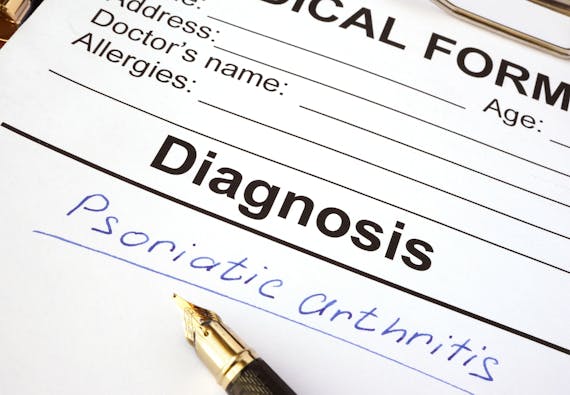Having a severe case of psoriasis does not necessarily mean you will develop PsA. Conversely, you could have few skin lesions, but have many joints affected by PsA.
How to Talk to Your Health Care Provider About Symptoms
By taking this short screening assessment, the Psoriasis Epidemiology Screening Tool (also known as PEST), you may help your health care provider make a diagnosis.
Bring your quiz results and the diagram to your appointment. Circle all of the places on the diagram where your body feels tender or sore. This way, you won’t forget to mention important symptoms. Even if you’re not feeling them on the day of your appointment, you should still bring them up with your provider.
Describe symptoms as precisely as possible. For example, instead of saying, “My knee hurts,” say “There is a sharp, piercing pain on the outside of my left knee, under the kneecap.”
Prepare five main questions you’d like to ask your provider. You’re probably wondering about many things concerning your health right now. Boiling them down to five main questions will help focus your conversation with your provider, and give your provider enough time to give you complete answers.
For example, you could ask about:
- Symptoms you are experiencing
- New medications or dietary supplements
- Information from other health care providers you see
- Treatments you are interested in
- How treatments might affect you
Be specific, open and honest. If you don’t understand anything your health care provider is saying, speak up. Also, if your provider is recommending a treatment that you don’t think is right for you, say so. It’s OK to ask about other treatment options.
The PsA Diagnosis Project
Learn about NPF’s research push to fund and develop a diagnostic test for PsA. Early recognition, diagnosis and treatment of PsA can help prevent or limit the extensive joint damage that occurs in later stages of the disease.
